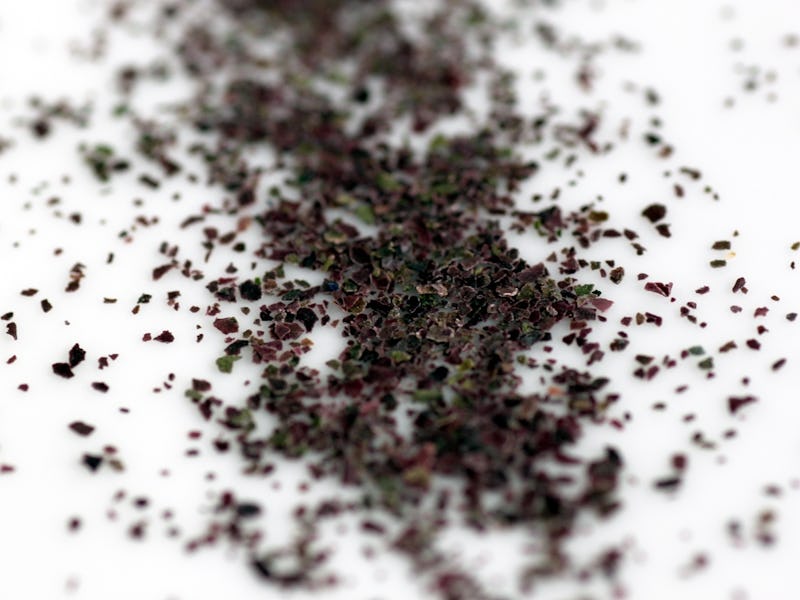Dulse Is More Than Bacon-Flavored Seaweed (Even Though it Doesn't Need to Be)
The best way to trick Americans into folding slimy seaweed into their diet? Tell them it tastes like bacon.

Dulse became the “superfood that tastes like bacon” overnight, thanks to savvy marketing that went straight for the stomach. Even American palates, used to steak and chicken, could make space for seaweed if it tasted like fatty pork loin. The man behind the movement was Oregon State University research chef Jason Ball, who’s happy he succeeded, but wishes he didn’t have to ride the bacon train to do it.
“It really is a lot more versatile than bacon,” Ball tells Inverse. “But for some reason that was the thing everybody really kind of latched onto.”
Ball’s been studying and cooking dulse at the school’s Food Innovation Center in an attempt to figure out how to get Americans to eat their “sea vegetables.” Dulse has long been cooked in Swedish and Irish kitchens, but, as Ball points out, there isn’t much room for seaweed stateside unless it’s wrapped around a ball of sushi rice.
When his team smoked, cured, and seasoned the soft red leaves and plunged them into the deep fryer, what came out was somewhat bacon-esque, but that was just one of many techniques they tried. In his own experiments, he’s used dried dulse to replace hops in beers, shredded it up in instant ramen flavoring packets, and used it as a salt replacement in sourdough bread. Hell, he’s even had a dulse ice cream sandwich. But it’s the bacon thing that stuck.
“We were getting comments from people wondering whether we had spliced pig DNA into the dulse,” says Ball. “Basically thinking that if you pulled the seaweed out of the water and ate it, it tasted like crispy bacon, which is kind of crazy. I mean, it would be a miracle.”
While he’s glad dulse is starting to whet American appetites, he’s keenly aware of the irony in the fact that his greater mission — to broaden the U.S. palate — hinges on one of its most basic foods.
At the very least, restaurant chefs are aware of its versatility. Scott Jones, chef de cuisine at Boston’s Menton, told Inverse he uses dulse not for its porky undertones but for its “green flavor,” which he adds to tuna tartare and foie gras, and he agrees with Ball that it’s much more savory and more versatile than what it’s known for. “It doesn’t really taste like bacon,” he says, but he explains that its high levels of proteins can be used to make foods taste meatier, more savory — even fattier.
After testing out 15 prototype dulse preparations on panels featuring thousands of panelists, Ball’s Food Innovation Center project ultimately rolled out the crowd favorite: a dulse-flavored salad dressing, folding the seaweed in together with soy sauce, rice wine vinegar, garlic, sugar, and olive oil. The product, sold through the Oregon-based New Seasons Market, has been a hit with customers — they’re trying to figure out how to scale up — and doesn’t mention bacon once.